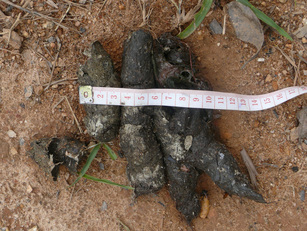This means at any given time, in the side pocket of my Ultra Lite Adventures backpack, I’m carting a Ziploc full of poop. Yup. A few extra ounces in the name of science. It’s no big deal, really, until I find myself explaining this odd pursuit to Sam-I-Am, a former Appalachian Trail thru-hiker and killer hairstylist. She owns a salon in Steamboat Springs, Colorado, which is the the northern-most resupply point on the CDT before the Wyoming border. Sam-I-Am’s response is, “Oh, honey.”
It’s worth it because for Adventurers and Scientists for Conservation those samples are a steaming hot commodity. The information Monson can glean from them goes into a data bank to back multiple conservation efforts. Monson is curious to uncover evidence of coyote hybridization with other wild canines like wolves. Coyotes are so common in North America that most people dismiss them, but in the words of John Muir “when one tugs at a single thing in nature, he finds it attached to the rest of the world.” If the coyotes aren’t eating well, is anyone else? Are coyotes being edged out in certain places by other wild canines? How do factors like elevation, remoteness, and location affect the robustness of a sample? Monson is looking for patterns, and in my small, gullible way, I am trying to help him.
Sometimes weeks pass before I collect a decent sample, one that isn’t half-digested rodent hair in a neat little tube twisted off at the end. No. There’s gotta be some meat to it. It must be fresh enough to contain the intestinal cells that hold the precious DNA.
I carry the poop, but I can’t take all the credit. My hiking partner, Ratatouille (he’s a chef), didn’t even put up a fight when I announced to him what we’d be doing on our thru-hike of the Continental Divide this year. Instead, he takes notes while I read out GPS coordinates. Or he measures the length and width of each sample using my compass while I play secretary. Then one of us carves a wedge from the sample using a rock or a stick, spears it with a toothpick, and pops it into a dime baggie. The baggie gets labeled and, when Ratatouille and I reach town, into the mail it goes.
I hope I have the right address.
Sarah Holt thru-hiked the Appalachian Trail in 2004 and the Pacific Crest Trail in 2008. She works seasonally for the National Park Service as a trails worker and part-time firefighter at Crater Lake National Park, Oregon.

